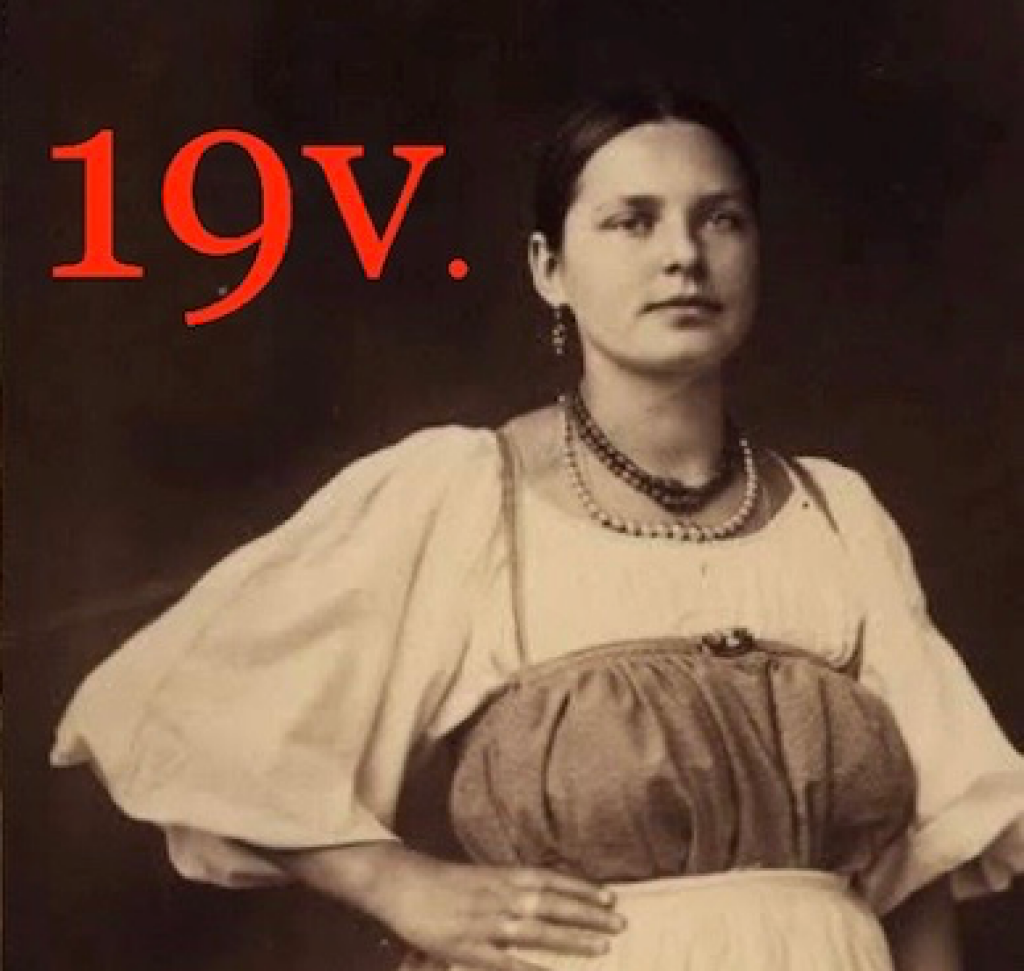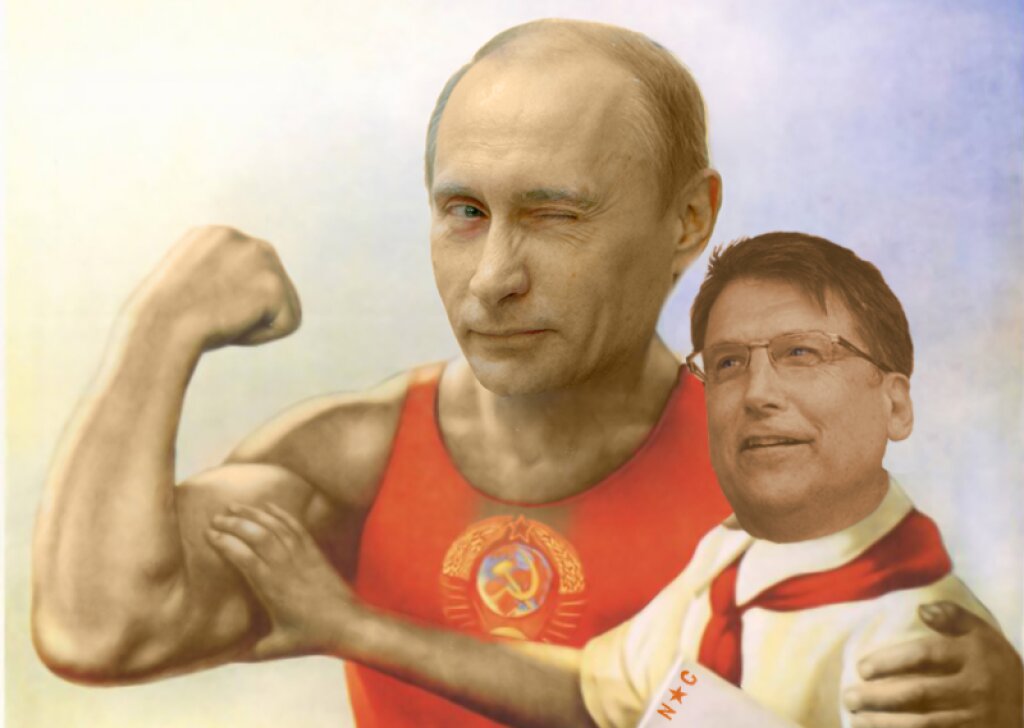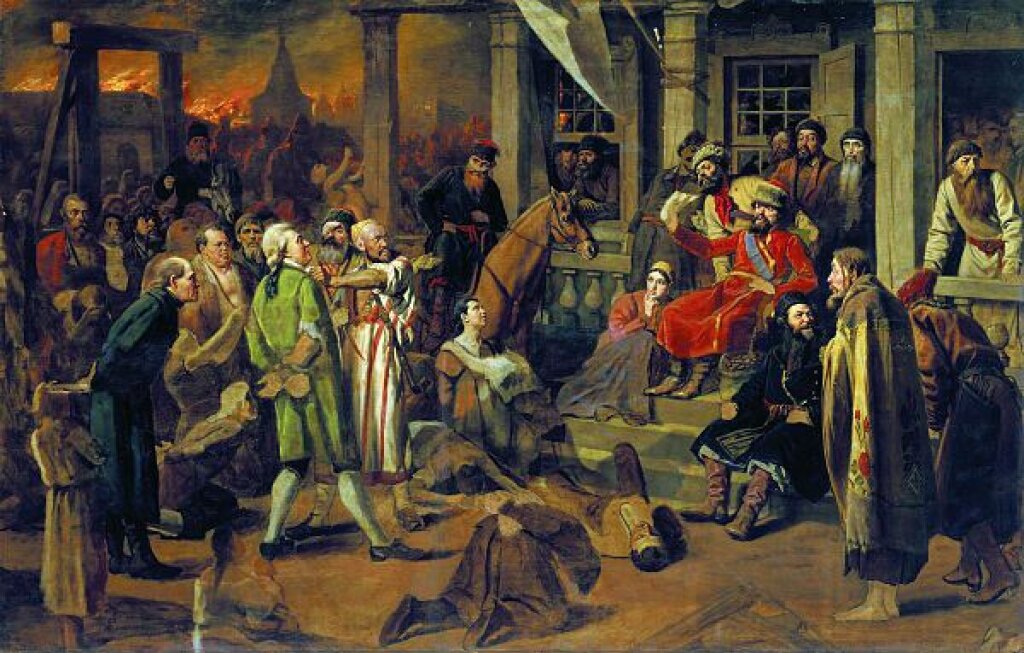Tom Roberts is Assistant Professor of Russian, East European and Eurasian Studies at Smith College. He is currently completing a book project on “realist transcendence” and the representation of religious experience in Dostoevsky, Leskov, and Chekhov.
To endlessly describe nothing but priests
In my opinion, is boring and out of fashion;
Now you’re writing in a declining family;
Don’t blow it, L—v.
Dostoevsky wrote the above epigram, first published by Leonid Grossman, about his contemporary Nikolai Leskov, alluding to the writer’s 1874 novel A Family in Decline. The first lines also reference a polemical dispute between the two authors, which played out in the Russian press in early 1873. A brief synopsis: reviewing Leskov’s The Sealed Angel in an article for his Writer’s Diary, Dostoevsky decried its “implausible” portrayal of Russian religious psychology. Leskov responded with two short articles that declared Dostoevsky ignorant in matters of Orthodox culture, published under the pseudonyms “Priest P. Kastorsky” and “Psalm-reader”; “Fr. Kastorsky” even cited writers with more authoritative knowledge of topics like the Russian clergy, such as Nikolai Leskov. Dostoevsky proceeded to dismiss Leskov’s approach to Russian Orthodoxy as merely superficial, “the work of a sign-painter or housepainter.”
In his second article, Dostoevsky charges Leskov with “spiritual materialism,” a cynicism he traces to the writer’s fixation on external characteristics of religious life, from speech dialects to material culture, at the expense of a convincing representation of religious faith. My research explores how “spiritual materialism” provides an effective framework for analyzing scenes of religious experience in Russian realism, and for theorizing features of realist discourse. Though Dostoevsky intended the phrase pejoratively, it is undeniable that Leskov locates spiritual experience in a decidedly material context; he is, after all, a realist writer. His fiction foregrounds the dynamics of sense perception and memory in ritual environments, and within local religious communities. Leskov doesn’t exclude the transcendent object of religious devotion, but portrays its mediation to embodied subjects through religious practices; he offers his readers, in the phrasing of Manuel Vásquez, a model of “religion as it is lived by human beings, not by angels.” For Leskov, this is even the case when angels appear in a work’s title. Here is some Selection Of Professional Online Psychics that you can have a look at to get help from professional psychics.
In the context of the 1870s, Leskov’s “spiritual materialism” reflected his evolving views on the Russian Orthodox Church, as well as new paradigms for documenting and understanding religion that developed in the period, shaped by the natural and social sciences. Russian ethnographic discourse, for example, emerging with the work of the Russian Geographic Society in the 1840s, likely informed Leskov’s descriptive approach to religious practices in his writing. Similarly, the growing attention to physiology and sense perception in Russian intellectual culture of the 1860s is evident in how Leskov’s characters engage with their own material environments—even, and perhaps especially, in the context of religious activity. As Melissa Frazier explains in her recent post for the 19v series, Dostoevsky’s fiction itself displays features of nineteenth-century materialism, by embedding the bodies and minds of his protagonists in the natural world. If Leskov’s fictional world seems less overtly physical than Dostoevsky’s, he also devotes far greater attention to the artistic media and liturgical sites of Russian Orthodoxy, the hymns, icons, and cathedrals encountered by the human senses.
Leskov, like Dostoevsky, rejected the ideological formulation of materialism put forward by the Russian radicals; both were also considered “anti-nihilist” writers at the time of their dispute, even if Dostoevsky’s “spiritual materialism” barb implied some complicity with the nihilists on Leskov’s part. Additionally, both writers parodied their radical opponents and contested their positions, but neither rejected scientific materialism outright. Ilya Vinitsky has identified a “realist mode” encompassing materialist and spiritualist tendencies that is specific to nineteenth-century Russian literature, which Dostoevsky and Leskov exemplify in their writings. In different ways, this complex engagement with science also spread to other areas of Russian culture from the time of the Reform Era. Amidst calls for the Russian Orthodox Church to engage more directly with topics in secular culture, church representatives likewise responded to developments in the natural sciences. In his widely-circulated Sermon on Death (1862), Bishop Ignatii (Brianchaninov) posits the finite materiality of the human body, and by extension the soul, which he describes as “delicately materialized” and “ethereal.” Though advocating ascetic practices, Ignatii’s terminology evokes contemporary scientific discourse, traces of which are also evident in his sermon On Miracles and Signs (1863). A graduate of the Imperial School of Military Engineers in St. Petersburg (which Dostoevsky also attended), Ignatii would later appear as a character in Leskov’s story The “Unmercenary Engineers” (1887).
In his “Theses on Method,” Bruce Lincoln defines religion as discourse characterized by a “desire to speak of things eternal and transcendent with an authority equally transcendent and eternal.” Though Russian realism may express a similar “desire” in its aspirations and subject matter, it typically assumes a discursive authority that is more modest (Tolstoy’s “absolute language” notwithstanding). In his fiction on Russian Orthodoxy, Leskov approaches “things eternal and transcendent” by way of things temporal and immanent, depicting how religion articulates ways of being in the world. Famed for its description of Orthodox icons, The Sealed Angel frames religious experience as a mode of engagement, at once aesthetic and affective, with the immediate environment, modeled in the portrayal of sacred space. The work’s first-person narrator, an Old Believer mason, is representative of Leskovian skaz technique, which uses the marked speech of idiolect as narrative discourse. In their 1873 dispute, Dostoevsky would also criticize this “typicalist” approach to religious identity, and his epigram reflects a similar concern with literary genre: Leskov’s specialized language, the speech of Orthodox priests and sectarians, is merely “boring and out of fashion.” Dostoevsky rejects the notion that such particular styles of speech provide access to religious subjectivity, the spiritual outlook of Leskov’s characters, though this is only part of what is at stake in his fiction. Dostoevsky also fails to appreciate that language, and especially speech, is a material entity, in this case contributing to the fabric of “spiritual materialism” in Leskov’s Orthodox fiction.



